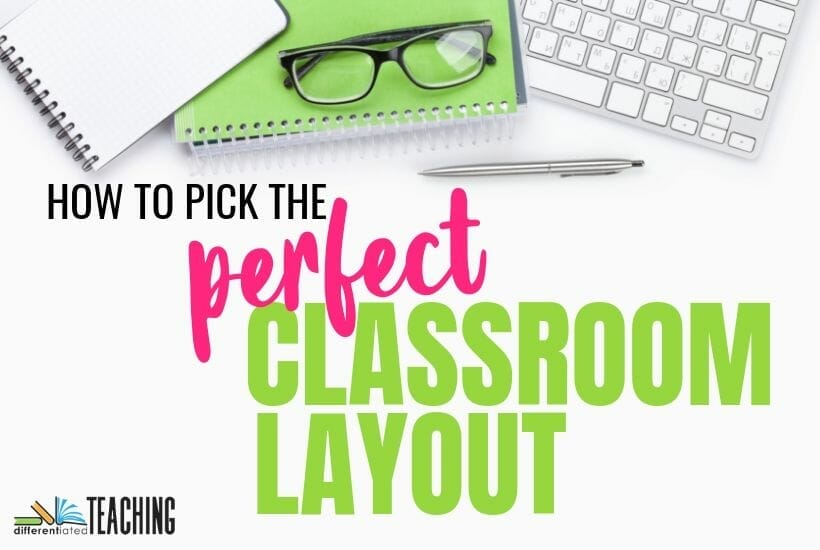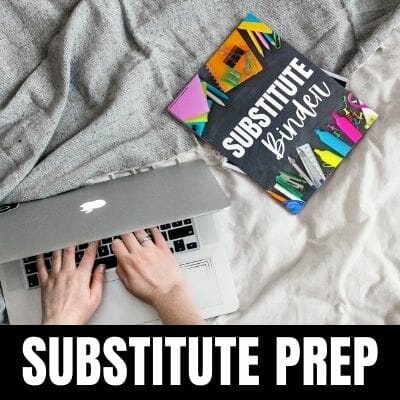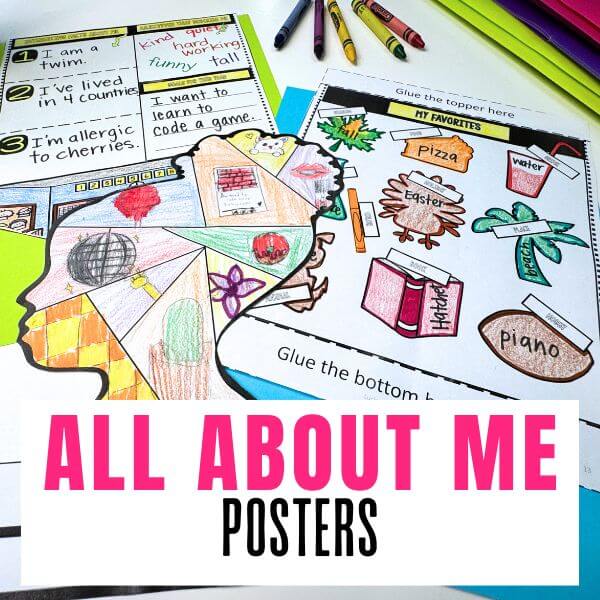What You Need to Know to Create the Best Classroom Layout
It’s a well-known fact that the layout of a classroom can greatly affect how well both students and teachers engage in a learning environment. You’ve probably seen first hand that the students closest to you are the ones that are most likely to be on-task and actively participating. It can be hard to find the right classroom layout, especially when you’ve got too many students to have them all at the front.
The semi-circle, or u-shape, is a popular alternative to traditional rows. However, this layout can make it difficult to keep all students within your field of view. So how do you overcome these obstacles and pick the best layout for your classroom?

For a layout to be effective, both students and teachers must be able to focus. How then can a teacher best create a classroom layout fitting for all parties involved? What factors should you consider when you start to design your own layout?
The reality is the most effective layout won’t look the same for every classroom or group of students. You’ve got to consider your students, your teaching style, and your classroom itself. That is to say, the best layout is a fluid and changing layout. As you start to set-up or rearrange your classroom, take these ideas into consideration as you plan layout design, and you will be sure to have an effective classroom layout.
Focus on Focus
The first and most important aspect of any classroom layout is a dedication to keeping students focused. Generally speaking, layouts with multiple rows encourage the participants furthest away from the front of the class to become distracted.
Movements from the other students, happenings outside the windows, and other factors can significantly reduce the level of focus and engagement. The larger the distance from front to back, the more this can become a problem. Consider whether you can easily walk around your classroom to reach these disengaged learners.
Similarly, decorations within the classroom layout can be great re-engagement pieces or great distraction pieces depending on the decoration. Whether decorations are static or constantly changing, focus on making your classroom decor purposeful and related to the skills you are teaching. By doing this your decor can help draw their attention back to your lesson or remind them of a question they would like to ask.
Safety Features

It’s also very important to note safety features in the classroom.
It may sound silly or like an afterthought, but according to Hang Safe Hooks, 90 percent of injuries that occur in schools are unintentional injuries that can occur in the classroom.
No matter the classroom layout, some children will disengage or misbehave for one reason or another, whether it’s a bad day, they’re ready for lunch, or they didn’t get enough sleep last night.
Nevertheless, it’s imperative that teachers must be able to focus, and the appropriate safety features will ensure there are few to no injury-related distractions should a child decide to get up or misbehave.
Consider Your Students
The students are the focal point of the classroom, so as you plan adjustments throughout the school year, why not ask for their opinion?
Before making any changes to an existing layout, find out which parts of the classroom your students feel support their learning versus which parts seem to distract from learning.
Students will have differing opinions, but it might be worth putting to a vote or noting a pattern to take into consideration with the next design. The goal isn’t to create visual white noise or abstract distractions, so let the students be the guide as to when something is still helpful and when its usefulness has faded into the background.
Less Is More
On that note, minimal design can often be the best design.
We’ve all seen those classrooms that are bursting with so much color and decor that the room itself is LOUD! Or maybe you’ve seen the room where stuff is everywhere. Papers, materials, boxes, and more. The piles cover every surface and fill all the shelves. In both of these rooms, there is so much going on that it can be hard for adults to stop and focus, let alone students.
The comparison has been made between the lack of clutter in a communal space of the home such as a living room equating to a more spacious feel in the mind. That is to say, a cluttered environment can make it difficult to focus, according to Freshome.
One test you can try is to remove a few items for a couple of weeks and see whether you or the class misses it or if the class is less engaged by its removal.

A couple of weeks is all you need to decide on the actual necessity of the items. Do this a couple of times through and you just might be surprised how much can be safely removed from the classroom and just how much the visual decluttering increases engagement.
Seats Can Change
A common pitfall to many classroom layouts is leaving the seating static or having all seats arranged in a similar fashion. Just as you will be forced to memorize names more thoroughly, having variable seating can keep students on their toes as well, according to Edutopia.
Rearrange the furniture to provide many different options of seating styles and see where and how students prefer to sit.
Note the groups that form and encourage or enforce regular changes so that students have to try a variety of different seating options.
This change alone can change a student’s perspective and may encourage involvement within the class and lessons.
Teachers Need the Least Space
Consider the amount of space and volume your teaching items require. Sometimes we, as teachers, take up more of the classroom space than is necessary and in the process, unconsciously clutter and cram all of the students in together uncomfortably.
Many teachers who have tried this tip slowly realized they didn’t even use their desk often enough to warrant the space it takes up! This has led to many teachers deciding to give up their desk altogether.
Although, on a less extreme note, it might be worthwhile to use a smaller or upright desk or just to be sure it’s up against a wall taking up as little space as possible.
Pod Spaces
Another innovative idea is to create pod spaces for various reasons.
Maybe you want one space to be dedicated to collaboration, another to be for creative work, and another to be for quiet time.
Just having a designated space can create separation and purpose in a student’s mind, encouraging them to stay on task when they are in the designated space for something specific. Likewise, on a bad day, letting your students know there is no punishment, but instead a safe space for quiet and reflection where it’s okay to “get away from it all” for a moment just might solve two problems simultaneously.
Design vs. Decoration
This tip may take a little bit longer to implement, but it can make a huge difference in making your classroom feel warm and inviting for students. Consider the coziest room in your home. What’s the main color?
Are there accent colors? How many?
According to Smith System, color can play a big part in the overall feel and ambiance of a room and the same is true of a classroom.
As you shop for flexible seating or organization materials, focus on a color scheme you’ll use in your classroom. This can create an invitation to learning out of your space.
Showcase the Learning Process
It’s not uncommon to see classrooms that display some of their best students’ most prized work, but for some students, this can create more competition than collaboration in the learning environment. This is especially true as students get older and are more aware of the differences between their own work and the work of peers.
Instead of displaying finished and graded work, try taking pictures of students as they work. Display the learning process so everyone can see this is a place where everyone can learn in their own way, not the place where only the “select few” can be worthy of praise.
Keep Your Layout Fluid
Just as the learning in your classroom is ongoing, always changing, and doesn’t end, the design and layout of your classroom can reflect the same.
Remember it’s not a process of perfection or a destination, but an ever-changing journey which depends on you, your current students, and the learning material at hand.
Get a feel for what works best, but note that at the end of the day, this is an ongoing process that does not need to be rushed or feel pressured.
Be Creative
It’s safe to say that now you can see just how much freedom you have when designing an effective classroom layout. ViewSonic suggests aiming for unique and innovative. Keep your students guessing and they can’t get bored. Ask them for input and they can’t disengage. Use a creative theme for your classroom decorations to add a little extra fun and personality into the room.
It takes a lot of thought and consideration in order to ensure a layout is effective for your classroom, but if you want to keep yourself and students fully engaged, it is a very worthwhile endeavor.
Start small, ask questions, and set a time to change things up again.
Remember that “change” also includes the removal of items just as well as the addition. Designated spaces automatically create focus. No two students are exactly alike (the same is true of teachers), so let your classroom reflect the uniqueness of its inhabitants.
Keep in mind though, visual noise will only likely create additional distractions. Lastly, remember the “cozy home” factor to ensure your students feel welcomed by your room. Try these tips and watch your engagement soar.
If you enjoyed this article, you can learn more about creating an effective classroom layout here:









